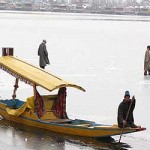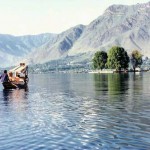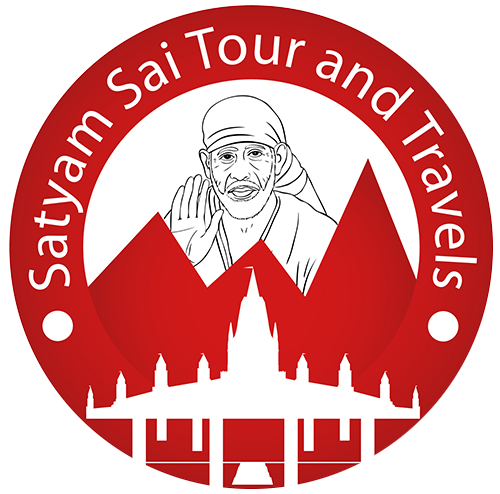Dal Lake is a lake in Srinagar, the summer capital of Jammu and Kashmir. The urban lake, which is the second largest in the state, is integral to tourism and recreation in Kashmir and is nicknamed the “Jewel in the crown of Kashmir” or “Srinagar’s Jewel”. The lake is also an important source for commercial operations in fishing and water plant harvesting.
The shore line of the lake, about 15.5 kilometres (9.6 mi), is encompassed by a boulevard lined with Mughal era gardens, parks, houseboats and hotels. Scenic views of the lake can be witnessed from the shore line Mughal gardens, such as Shalimar Bagh and Nishat Bagh built during the reign of Mughal Emperor Jahangir) and from houseboats cruising along the lake in the colourful shikaras. During the winter season, the temperature sometimes reaches −11 °C (12 °F), freezing the lake.
The lake covers an area of 18 square kilometres (6.9 sq mi) and is part of a natural wetland which covers 21.1 square kilometres (8.1 sq mi), including its floating gardens. The floating gardens, known as “Rad” in Kashmiri, blossom with lotus flowers during July and August. The wetland is divided by causeways into four basins; Gagribal, Lokut Dal, Bod Dal and Nagin (although Nagin is also considered as an independent lake). Lokut-dal and Bod-dal each have an island in the centre, known as Rup Lank (or Char Chinari) and Sona Lank respectively.
At present, the Dal Lake and its Mughal gardens, Shalimar Bagh and the Nishat Bagh on its periphery are undergoing intensive restoration measures to fully address the serious eutrophication problems experienced by the lake. Massive investments of around US $275 million (Rs 1100 crores) is being made by the Government of India to restore the lake to its original splendour.
History
 Dal lake is mentioned as Mahasarit in ancient Sanskrit texts. Ancient history records mention that a village named Isabar to the east of Dal Lake was the residence of goddess Durga.[citation needed] This place was known as Sureshwari on the bank of the lake, which was sourced by a spring called the Satadhara.[citation needed]
Dal lake is mentioned as Mahasarit in ancient Sanskrit texts. Ancient history records mention that a village named Isabar to the east of Dal Lake was the residence of goddess Durga.[citation needed] This place was known as Sureshwari on the bank of the lake, which was sourced by a spring called the Satadhara.[citation needed]
During the Mughal period, the Mughal rulers of India designated Kashmir, Srinagar in particular, as their summer resort. They developed the precincts of the Dal lake in Srinagar with sprawling Mughal-type gardens and pavilions as pleasure resorts to enjoy the salubrious cool climate. After the death of Aurangzeb in 1707, which led to the disintegration of the Mughal Empire, Pashtun tribes in the area around the lake and city increased, and the Durrani Empire ruled the city for several decades. In 1814 a significant part of the Kashmir valley, including Srinagar, was annexed by Raja Ranjit Singh to his kingdom, and the Sikhs grew in influence in the region for 27 years.
During the British Raj, the British also made Srinagar their capital during the summer months, attracted by the cool climate of the Kashmir valley, amidst the back drop of the majestic snow covered Himalayan ranges. The lake precincts experience temperatures in the range of 1–11 °C (34–52 °F) during winter and 12–30 °C (54–86 °F) during the summer season. The lake freezes when temperatures drop to about −11 °C (12 °F) during severe winter. Although the Dogra Maharaja of Kashmir restricted the building of houses in the valley, the British circumvented this rule by commissioning lavish houseboats to be built on the Dal Lake. The houseboats have been referred to as, “each one a little piece of England afloat on Dal Lake.”
Transport connections
 Dal Lake lies in heart of the Srinagar city and is well connected by road and air links. The nearest airport, which connects with other major cities in the country, is about 7 kilometres (4.3 mi) away at Badgam. The nearest railway station is 300 kilometres (190 mi) away at Jammu.
Dal Lake lies in heart of the Srinagar city and is well connected by road and air links. The nearest airport, which connects with other major cities in the country, is about 7 kilometres (4.3 mi) away at Badgam. The nearest railway station is 300 kilometres (190 mi) away at Jammu.
The National Highway NH1A connects the Kashmir valley with rest of the country. Shikaras provide a water taxi service available to see the sights in the Dal Lake and to approach the houseboats moored on the lake periphery.

